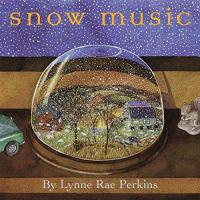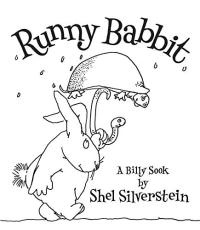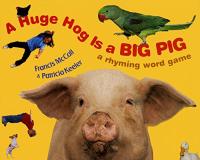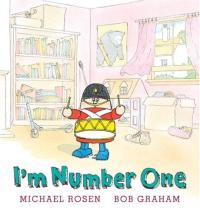Key Information
Focus
Appropriate Group Size
What are blending and segmenting?
Blending (putting sounds together) and segmenting (pulling sounds apart) are skills that are necessary for learning to read and spell. When students understand that spoken words can be broken up into individual sounds (phonemes) and that letters can be used to represent those sounds, they have the insight necessary to read and write in an alphabetic language. Blending and segmenting games and activities can help students to develop phonemic awareness, a strong predictor of reading achievement.
Why teach blending and segmenting?
- Teaching students to identify and manipulate the sounds in words (phonemic awareness) helps build the foundation for phonics instruction.
- Blending and segmenting activities and games can help students to develop phonological and phonemic awareness.
- Developing phonemic awareness is especially important for students identified as being at risk for reading difficulty.
How to teach blending and segmenting
Segmenting and blending — especially segmenting and blending phonemes (the individual sounds within words) — can be difficult at first because spoken language comes out in a continuous stream, not in a series of discrete bits. Beginning with larger units of speech can help.
Early in phonological awareness instruction, teach children to segment sentences into individual words. Identify familiar short poems such as “I scream you scream we all scream for ice cream!” Have children clap their hands with each word.
As children advance in their ability to manipulate oral language, teach them to segment words into syllables. For example, have children segment their names into syllables: e.g., Ra-chel, Al-ex-an-der, and Rod-ney. Likewise, have them blend syllables to make words.
Once in kindergarten, the focus of blending and segmenting instruction should shift to the phoneme level. This work can be challenging for students, so it can be useful to know which scaffolds can help students make the leap.
- Start with words that have only two phonemes (for example, am, no, in)
- Begin with continuous sounds (phonemes that can be held for a beat or two without distorting the sound). Have students practice blending and segmenting words with continuous sounds by holding the sounds using a method called “continuous blending” or “continuous phonation.” (e.g., “aaaammmm … am”)
- Then, introduce a few stop sounds (phonemes that cannot be held continuously). Ensure that students articulate the sounds cleanly, without adding an “uh” to the ends of sounds such as /t/ and /b/. Stop sound at the end of words (eg. at, up) are easier to blend than those that have stop sounds at the beginning (for example, be, go)
- As students are ready, progress to words with three phonemes, keeping in mind that words beginning with continuous phonemes (for example, sun) are easier to blend and segment than those with stop sounds (for example, top).
- As students become more skilled at blending and segmenting, they may no longer need to hold sounds continuously, transitioning from “ssssuuunnn” to sun.
It can be helpful to anchor the sounds students are working with to visual scaffolds. Elkonin boxes, manipulatives (such as coins or tiles), and hand motions are popular supports. It’s important to remember, however, that the goal of blending and segmenting games is literacy and there is no better visual representation for a phoneme than a letter.
Watch a lesson: blending syllables to make a word (whole class)
In this syllable blending activity, the teacher says the two syllables of each word and the students repeat and orally combine the syllables to make words. Hand motions help reinforce the concept. (Teach for Life)
Watch a lesson: blending phonemes (small group)
At Burgess-Peterson Academy in Atlanta, Georgia, teacher DeAngela Huggins helps students practice blending phonemes, or sounds, into words. (From our sister project, Reading Universe )
Watch a demonstration: build-a-word (beginning blends)
Reading consultant Dr. Antonio Fierro of El Paso, Texas, demonstrates how using the build-a-word teaching strategy can help students practice spelling words with blends, like sled. (From our sister project, Reading Universe )
Watch a lesson: segmenting words into phonemes (small group)
At Burgess-Peterson Academy in Atlanta, Georgia, teacher DeAngela Huggins works with students on segmenting words into phonemes by tapping out the sounds in each word with their fingers. (From our sister project, Reading Universe )
Collect resources
Blending: guess-the-word game
This activity, from our article Phonological Awareness: Instructional and Assessment Guidelines, is an example of how to teach students to blend and identify a word that is stretched out into its basic sound elements.
Objective: Students will be able to blend and identify a word that is stretched out into its component sounds.
Materials needed: Picture cards of objects that students are likely to recognize such as: sun, bell, fan, flag, snake, tree, book, cup, clock, plane
Activity: Place a small number of picture cards in front of children. Tell them you are going to say a word using “Snail Talk” a slow way of saying words (e.g., /fffffllllaaaag/). They have to look at the pictures and guess the word you are saying. It is important to have the children guess the answer in their head so that everyone gets an opportunity to try it. Alternate between having one child identify the word and having all children say the word aloud in chorus to keep children engaged.
Blending: robot talk
Talking in “Robot Talk,” students hear segmented sounds and put them together (blend them) into words. See robot talk activity
See all Blending/Segmenting Activities from the University of Virginia PALS program.
Blending slide
The “Reading Genie” offers teachers a simple way to teach students about blends. Teachers can use a picture or small replica of a playground slide and have the sounds “slide” together to form a word. See blending slide activity
Oral blending activity
The information here describes the importance of teaching blending skills to young children. This link provides suggestions for oral sound blending activities to help students practice and develop smooth blending skills. See oral blending activities
Sound blending using songs
This activity (see Yopp, M., 1992) is to the tune of “If You’re Happy and You Know It, Clap Your Hands.”
If you think you know this word, shout it out!
If you think you know this word, shout it out!
If you think you know this word,
Then tell me what you’ve heard,
If you think you know this word, shout it out!
After singing, the teacher says a segmented word such as /k/ /a/ /t/ and students provide the blended word “cat.”
Segmenting cheer activity
This link provides teachers with information on how to conduct the following segmentation cheer activity. See segmenting cheer activity
Write the “Segmentation Cheer” on chart paper, and teach it to children. Each time you say the cheer, change the words in the third line. Have children segment the word sound by sound. Begin with words that have three phonemes, such as ten, rat, cat, dog, soap, read, and fish.
Segmentation Cheer
Listen to my cheer.
Then shout the sounds you hear.
Sun! Sun! Sun!
Let’s take apart the word sun.
Give me the beginning sound. (Children respond with /s/.)
Give me the middle sound. (Children respond with /u/.)
Give me the ending sound. (Children respond with /n/.)
That’s right!
/s/ /u/ /n/-Sun! Sun! Sun!
Segmenting with puppets
Teachers can use the activity found on this website to help teach students about segmenting sounds. The activity includes the use of a puppet and downloadable picture cards. See segmenting with puppets activity
Teaching blending and segmenting
Learn more about teaching phoneme blending and segmenting in this skill explainer from our sister site, Reading Universe. You’ll find classroom videos, lesson plans, student practice activities, and more.
Differentiate instruction
For second language learners, students of varying reading skill, and younger learners
- Incorporate print into blending and segmenting the individual sounds in words with students who know the spelling-sound correspondences in the words.
- Use picture-centered activities to support English-learners and younger students.
See the research that supports this strategy
Chard, D., & Dickson, S. (1999). Phonological Awareness: Instructional and Assessment Guidelines.
Clemens, N., Solari, E., Kearns, D. M., Fien, H., Nelson, N. J., Stelega, M., Burns, M., St. Martin, K. & Hoeft, F. (2021, December 14). They Say You Can Do Phonemic Awareness Instruction “In the Dark”, But Should You? A Critical Evaluation of the Trend Toward Advanced Phonemic Awareness Training .
Fox, B., & Routh, D.K. (1976). Phonemic analysis and synthesis as word-attack skills. Journal of Educational Psychology, 68, 70-74.
Gonzalez-Frey, S. & Ehri, L.C. (2021) Connected Phonation Is More Effective than Segmented Phonation for Teaching Beginning Readers to Decode Unfamiliar Words . Scientific Studies of Reading, 25:3, 272-285.
Sensenbaugh. (1996). ABCs of Phonemic Awareness.
Smith, S.B., Simmons, D.C., & Kameenui, E.J. (February, 1995). Synthesis of research on phonological awareness: Principles and implications for reading acquisition. (Technical Report no. 21, National Center to Improve the Tools of Education). Eugene: University of Oregon.
Yopp, H. K. (1992). Developing phonemic awareness in young children. The Reading Teacher, 45 , 696-703.
Children’s books to use with this strategy

Snow Music

Runny Babbit: A Billy Sook

A Huge Hog Is a Big Pig

